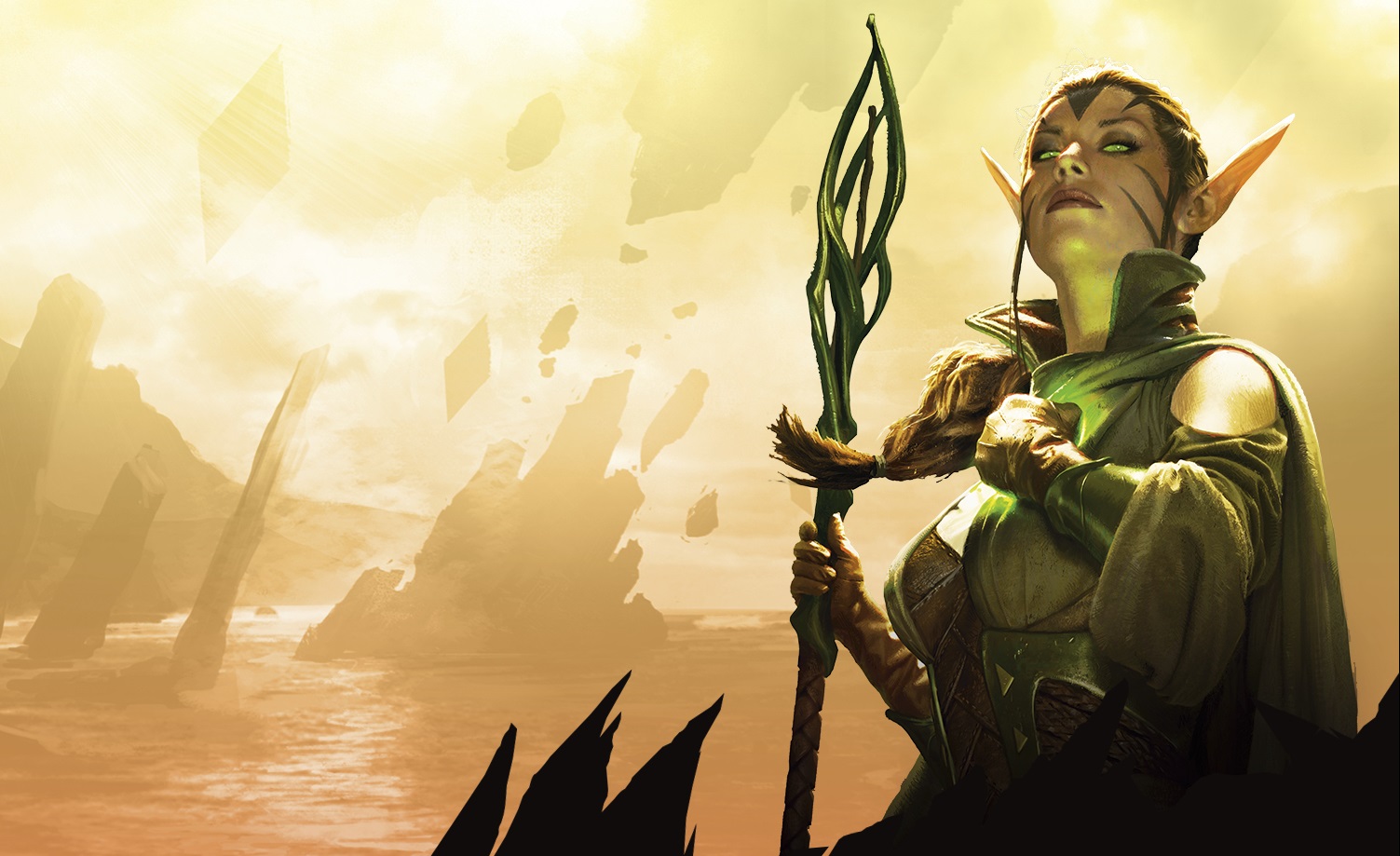Pro-Tour Primer Modern – Midrange

Welcome back to our lead up to the Pro Tour. We previously covered the Aggro decks, so now we’re going to start wandering into the realm of the Midrange decks. Whereas the more straightforward Aggro decks aim to reduce an opponent’s life from 20 to 0 as quickly as possible, Midrange decks tend to take a little bit longer to do this. Midrange decks aim to spend the first few turns restricting the opponent’s resources before getting one or two powerful creatures onto the battlefield and completely taking over.
Jund
Creatures (13)
4 Dark Confidant
2 Scavenging Ooze
4 Tarmogoyf
1 Kitchen Finks
1 Olivia Voldaren
1 Pia and Kiran Nalaar
Spells (23)
4 Inquisition of Kozilek
4 Lightning Bolt
2 Thoughtseize
3 Abrupt Decay
3 Terminate
2 Kolaghan’s Command
3 Liliana of the Veil
2 Maelstrom Pulse
Lands (24)
4 Blackcleave Cliffs
1 Blood Crypt
3 Bloodstained Mire
2 Forest
1 Ghost Quarter
1 Overgrown Tomb
3 Raging Ravine
1 Stomping Ground
2 Swamp
4 Verdant Catacombs
2 Wooded Foothills
Sideboard (15)
1 Thoughtseize
1 Ancient Grudge
1 Pyroclasm
1 Unravel the Aether
4 Fulminator Mage
2 Kitchen Finks
1 Painful Truths
1 Huntmaster of the Fells
1 Night of Souls’ Betrayal
1 Obstinate Baloth
1 Shatterstorm
Abzan
Creatures (17)
2 Dark Confidant
1 Scavenging Ooze
4 Tarmogoyf
3 Kitchen Finks
3 Knight of the Reliquary
3 Siege Rhino
1 Thrun, the Last Troll
Spells (20)
1 Duress
3 Inquisition of Kozilek
3 Path to Exile
3 Thoughtseize
3 Abrupt Decay
2 Liliana of the Veil
4 Lingering Souls
1 Painful Truths
Lands (24)
1 Bojuka Bog
1 Forest
1 Gavony Township
1 Ghost Quarter
1 Godless Shrine
2 Marsh Flats
2 Overgrown Tomb
1 Plains
1 Shambling Vent
1 Stirring Wildwood
2 Swamp
2 Temple Garden
1 Treetop Village
1 Twilight Mire
1 Urborg, Tomb of Yawgmoth
1 Verdant Catacombs
4 Windswept Heath
Sideboard (15)
1 Ghost Quarter
1 Path to Exile
1 Gaddock Teeg
2 Spellskite
2 Stony Silence
2 Fulminator Mage
1 Ghostly Prison
1 Damnation
2 Sorin, Solemn Visitor
1 Blood Baron of Vizkopa
1 Sigarda, Host of Herons
Tron
Creatures (7)
2 Spellskite
3 Wurmcoil Engine
2 Ulamog, the Ceaseless Hunger
Spells (32)
4 Ancient Stirrings
4 Chromatic Sphere
4 Chromatic Star
4 Expedition Map
2 Pyroclasm
4 Sylvan Scrying
1 Firespout
4 Oblivion Stone
4 Karn Liberated
1 Ugin, the Spirit Dragon
Lands (21)
1 Eye of Ugin
2 Forest
2 Ghost Quarter
4 Grove of the Burnwillows
4 Urza’s Mine
4 Urza’s Power Plant
4 Urza’s Tower
Sideboard (15)
4 Nature’s Claim
2 Relic of Progenitus
2 Life from the Loam
1 Spellskite
1 Firespout
2 Crumble to Dust
2 Thragtusk
1 Emrakul, the Aeons Torn
GBx are the most established Midrange decks with Abzan and Jund taking turns being the most popular depending on how the rest of the metagame shapes up. The core of the GBx decks are very similar: discard spells, Liliana of the Veil and efficient removal like Abrupt Decay.
These are all great ways to deny an opponent resources just long enough to cast creatures such as Scavenging Ooze, Tarmogoyf or Tasigur, the Golden Fang. The big differences between the GBx decks start to sneak in when looking at what the third colour brings to each deck. Abzan uses its white mana to gain access to Lingering Souls, Path to Exile and Siege Rhino, the current Standard all-star. Sideboard options such as Stony Silence are also great. Jund tends to be more removal heavy as its red mana allows access to Lightning Bolt, Kolaghan’s Command and Terminate. In the place of Siege Rhino, one or two Olivia Voldaren or Huntmaster of the Fells tend to top out the mana curve. The lack of Siege Rhino also means Jund can ‘safely’ use Dark Confidant to gain card advantage.
With the banning of Splinter Twin and the support for colourless spells in the Battle for Zendikar block, Tron has risen in popularity. Splinter Twin was historically a deck that Tron struggled with but now, the latter looks set to make a big showing at the Pro Tour. Tron is loosely described as a Midrange deck but plays very differently from the GBx decks mentioned above. Tron gets its name from the three Urza lands, which it attempts to hit as quickly as possible through casting Ancient Stirrings and artifacts like Chromatic Star. Once found, the Urza lands allow very large and very unfair spells like Karn Liberated or Wurmcoil Engine to be cast from the third turn.
Other important spells include Ugin, the Spirit Dragon and Ulamog, the Ceaseless Hunger. Most of the threats Tron utilises can normally protect themselves, allowing the player to slowly ride to victory.





